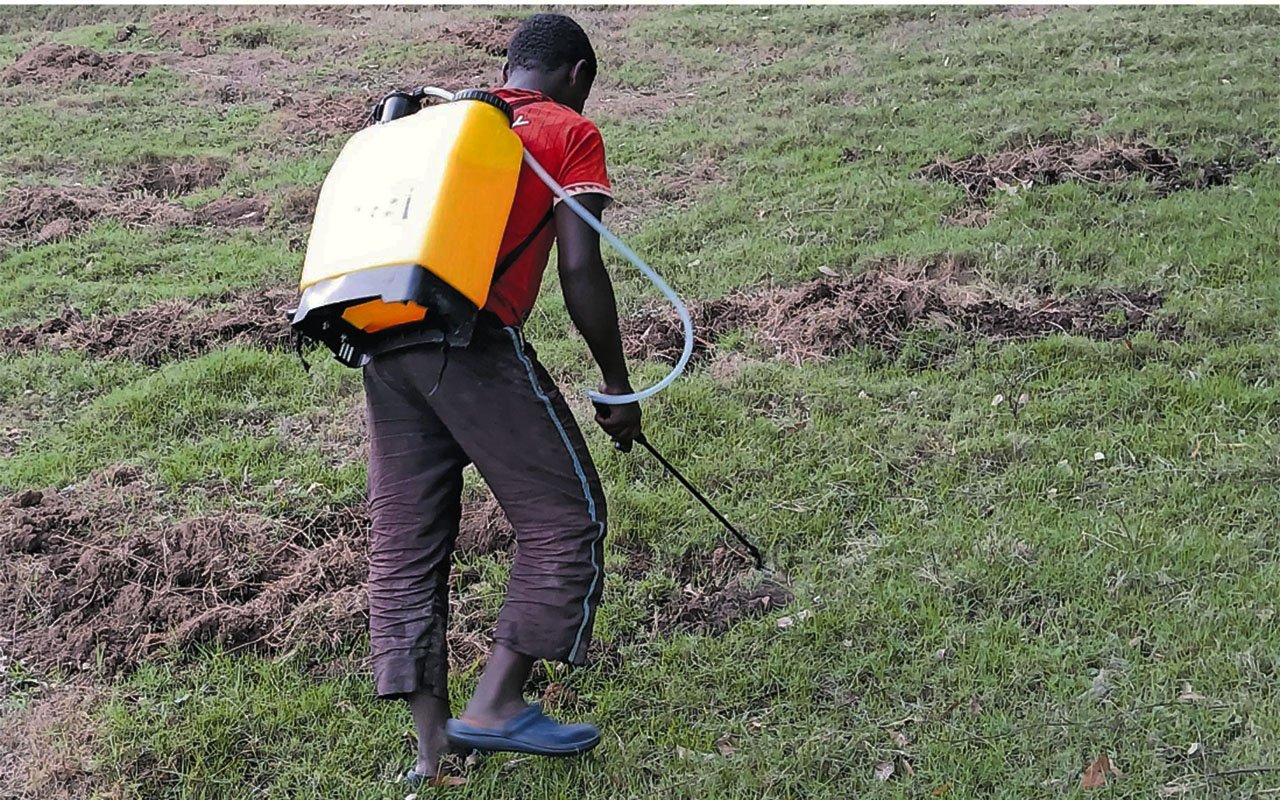Prime
The cost of our avoidable imports

Such textiles are mainly imported. File photo
Uganda imported commodities worth Shs12.4 trillion last year, according to statistics from the Uganda Revenue Authority (URA). The year before (2013), the country imported commodities worth about Shs11 trillion and about Shs11. 6 trillion in 2012.
Now, upon studying the details of those import statistics, and thereafter making inquiries from industry experts about what we can locally produce, Saturday Monitor found the rather disquieting picture that we could produce a good percentage of those commodities we import. Many of these imports are produced using simple technology, which we have full capacity to adopt. Some of them are agricultural products, which come to Uganda without having had any much value added after harvesting from farms in their countries of origin.
The statistics also reveal that last year alone, we expended a total of Shs1 trillion on importing goods which industry experts reckon we could produce locally.
That amount is about eight per cent of the entire national Budget, and it can cover almost the entire Health ministry budget. Even more significantly, economists (including President Museveni) have long reckoned that if we cut imports and keep in the country the money we expend on them, it translates into increased investment and production in our own economy, increased employment opportunities, increased earnings for local labour, among other things.
Below, we briefly look at some of those imports, which we discovered we could be already locally producing.
Dairy products
The products range from pasteurised milk to yoghurt, cheese, butter, and powdered milk. The country imported a total of about Shs15 billion worth of these last year. Majority of them from Kenya, but also a few from South Africa and Europe.
The executive director Dairy Development Authority, Dr Jolly Zaribwende, says given that we are a country with enough livestock to produce all the dairy products we need and even have a surplus for export, there is really no need for Uganda to import such a big number of dairy products, most of which are already being produced locally.
She says what we particularly need to do is scale up our production, as well as improve on processing the raw produce into processed products.
Leather and leather products
The imports in this area are always mainly in form of finished products such as shoes, belts, bandoliers, handbags and wallets. But the country also imports unprocessed skins and hides.
Last year, the total amount of these amounted to approximately Shs19 billion.
The chairman Uganda Leather and Allied Industries Association, Mr Emmanuel Mwebe, decried the fact that while we produce a large quantity of hides and skins, we export them all in raw form and then go on to import 90 per cent of the finished leather every year, yet we could turn the tables simply by upgrading the tanneries in the country to a level where they can process hides and skins into finished leather.
According to Mr Mwebe, we should not continue having only one tannery (Leather Industries of Uganda) processing hides and skins into finished products. Rather we should upgrade the other tanneries to a level where they can produce finished leather, and even establish many new tanneries.
Cotton fabrics
URA statistics indicate that without including those which were part of the Shs178 billion worth of consignments of second-hand clothes, last year’s imports of cotton fabrics were worth approximately Shs80 billion. These included finished products such as cotton shirts, trousers, dresses, undergarments, bedsheets, bedspreadings and handkerchiefs, as well as semi-processed cotton material such as cotton thread, cotton yarn, among others.
Add to these, the used cotton fabrics that (according to traders downtown) make about half of the second-hand clothes consignments, and the total amount of cotton fabrics imported last year is at least 180 billion.
Isaiah Muwuma, an importer of clothes from China and the Middle East, says given that we produce more cotton than we consume locally, we could cut the money we lose to importing cotton fabrics by starting to locally process cotton into finished cloth.
Muwuma says on his visits to clothing factories in Asian countries, he has realised that the technology used is not so complicated and we could easily adopt much of it here if we cared to.
He stresses that there is especially need for government to drive initiative in this sector, through such means as supporting local textile industries and imposing strict regulations on importation of second hand products.
Paper products
These are numerous, including many that are produced using very high technology and which –therefore– we might not be able to locally produce such as glossy paper and newsprint.
Last year, we imported more than Shs250 billion worth of these products, among themn newsprint, kraft paper, paperboards, fluting paper, envelopes, cardboard paper, box paper, among others.
Mustafa Kawooya, a trader on Nasser Road in Kampala, who imports paper products from Kenya and Asia, says we must acknowledge that paper products are rather hard to produce, and that we could never locally produce all the varieties required to meet the local demand.
However, he adds that we could locally make a good number of paper products to substitute imports.
Kawooya says we need to cultivate trees particularly for the purpose of paper-making, as we currently do not produce enough wood to sustain a paper industry. For technology, the paper trader says much of it can be locally adopted.
Prof Charles Kwesiga of Uganda Industrial Research Institute (UIRI), adds that there is also need for us to explore alternative raw materials we could use to produce paper such as fibres (especially from the farm) and reveals that UIRI has already developed technology that makes packaging paper from banana fibres.
Agro-product Juices
URA statistics show that last year alone, Ugandans spent more than Shs25 billion on the importation of different fruit juices, extracted from fruits such as mangos, oranges and apples among others.
Ivan Nabimanya, a graduate of Bachelor of Science in Food Science and Technology, says there is no reason why Uganda should be importing a big number of fruit juices. He argues that since we grow enough fruit in this country to manufacture nearly all the fruit juices we need, we should only be importing a little juice from those fruits we cannot locally grow. He says since the technology is available and several people have used it and shown it is viable.
What we need is to set up more fruit-processing factories so our unconsumed fruit do not rot during harvest seasons.
Tomato products
Recorded as tomato ketch-up and other tomato sauces in the URA records, the country parted with Shs1.9 billion to import them last year. But according to Nabimanya, this is another import which we can easily make at home.
Nabimanya acknowledges that there are a few people now manufacturing tomato sauces on the local market, but he says they are still operating at a very small scale and therefore producing an almost negligible quantity when juxtaposed against the total requirement in the country.
He says what we primarily need is to scale up the production that has taken off, as well as encourage the growing of tomatoes and facilitate the spreading out of tomato-processing technology, especially to those who can do it on small and medium scales.
Salts
URA statistics show that last year alone, we imported salts worth Shs81 billion. The total amount rises every year.
But six years ago, this newspaper reported that according to a 2007 Makerere University report, the revival of Lake Katwe salt factory alone could provide 80 per cent of our annual demand (40,000 tonnes per year), leaving us to import only 20 per cent of what we currently bring in every year.
Lake Katwe salt plant collapsed in the 1980s after operating for just over a decade, due to mismanagement and poor quality machinery that quickly became obsolete.
Why do we continue to import?
Prof Charles Kwesiga, the executive director of the Uganda Industrial Research Institute (UIRI) –the government department charged with the incubation of industry through pioneering of industrial research, says indeed many of the products we currently import can be produced locally, especially those whose raw materials are locally available.
However, he points out that there are several obstacles that need to be addressed first. He points out the fact that we still lack the technology that can enable local manufacturing of many of the products. “At UIRI, we have dedicated most of efforts to research; looking at products, studying how they are made abroad and trying to adopt and tailor the same technology locally,” he says.
Prof Kwesiga also says the country as a whole has issues to sort in order to get better results. “There is also need to invest more in the developers so they can produce more and better results. There is need to make sure the developers across the country have well-equipped laboratories, workshops and all the equipment they need to mastermind technology adoption and innovation.”
State minister for Trade David Wakikona says there is a problem of our local products being rather inferior to those imported from abroad, which has encouraged traders to import since the imported versions of similar products sell faster. He says the standard of our local products thus needs to be improved, so we can favourably compete with (and even outsell) the imports.
Eriya Ochieng, a graduate student at Makerere University’s Economic Policy Research Centre, says government needs to directly facilitate import substitution. “Government needs to come up with and implement policies that bar importation of certain commodities so that local producers have room to grow,” he says.
He also argues that government needs to provide subsidies to specific investors in key industries where there is great need to produce locally and cut imports, such as leather processing and salt manufacturing.
Mr Wakikona acknowledges that government needs to work hand-in-hand with some private individuals in trying to produce substitutes to imports; to ensure better regulation of imports so that poor quality cheap imports do not come in and out compete local products; to ensure our energy prices go down so the cost of production consequently go down, among other things.
However, the minister adds that the country has made steps towards cutting its imports. “We now domestically produce sugar, bread, cooking oil, curries, mattresses, among others we previously imported,” he says.
Yet Prof Kwesiga calls on government to encourage local enterprise and rely less on foreign investment, saying business decisions by foreigners are difficult to control for purposes of encouraging local production.
Other imports
Item Import Value (2014)
Chewing gum 31 billon
Confectionary 30 billion
Animal feeds 13 billion
Paper products 250 billion




